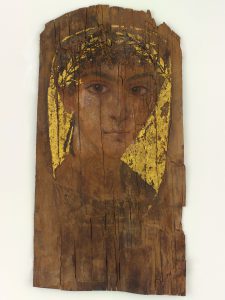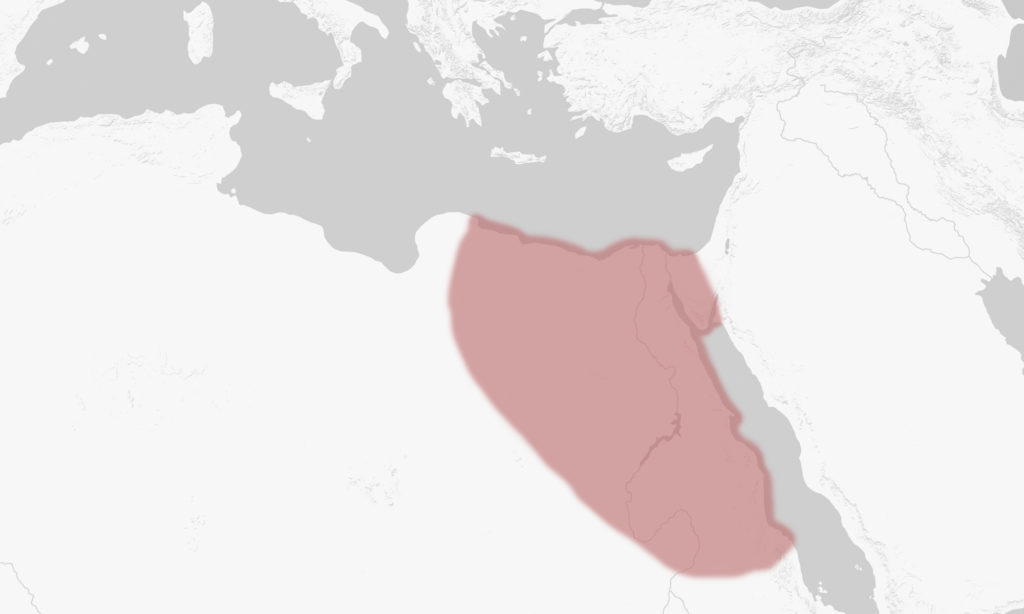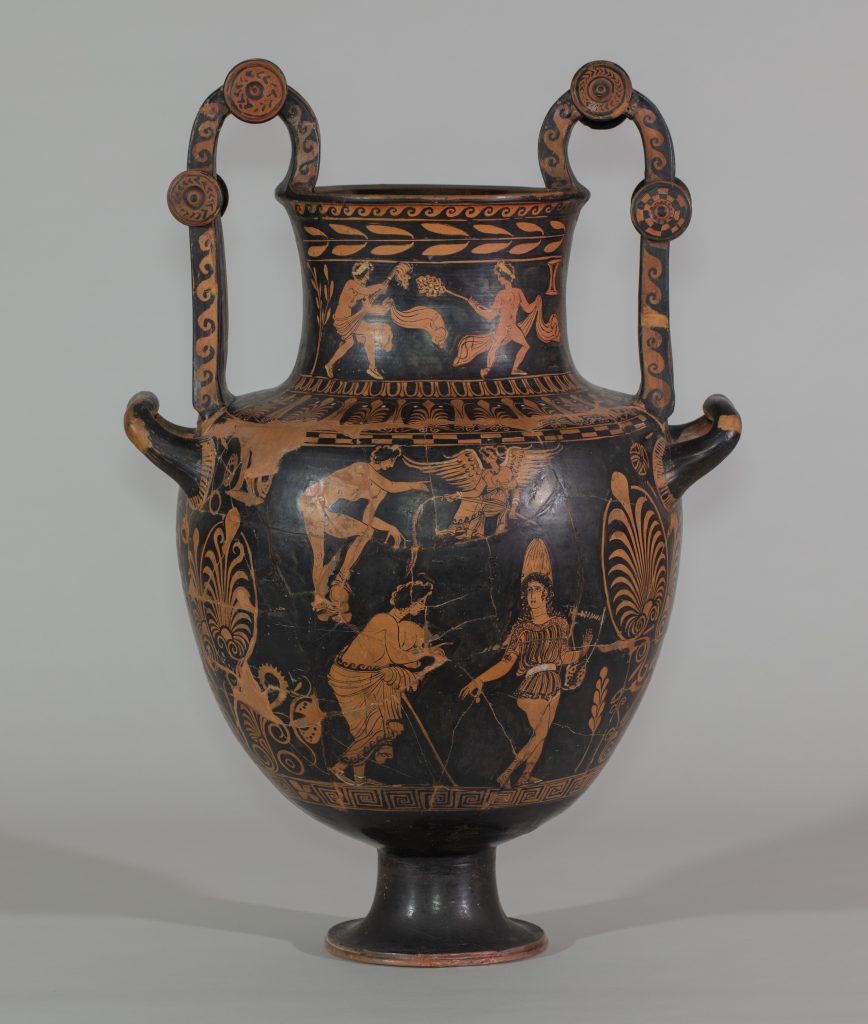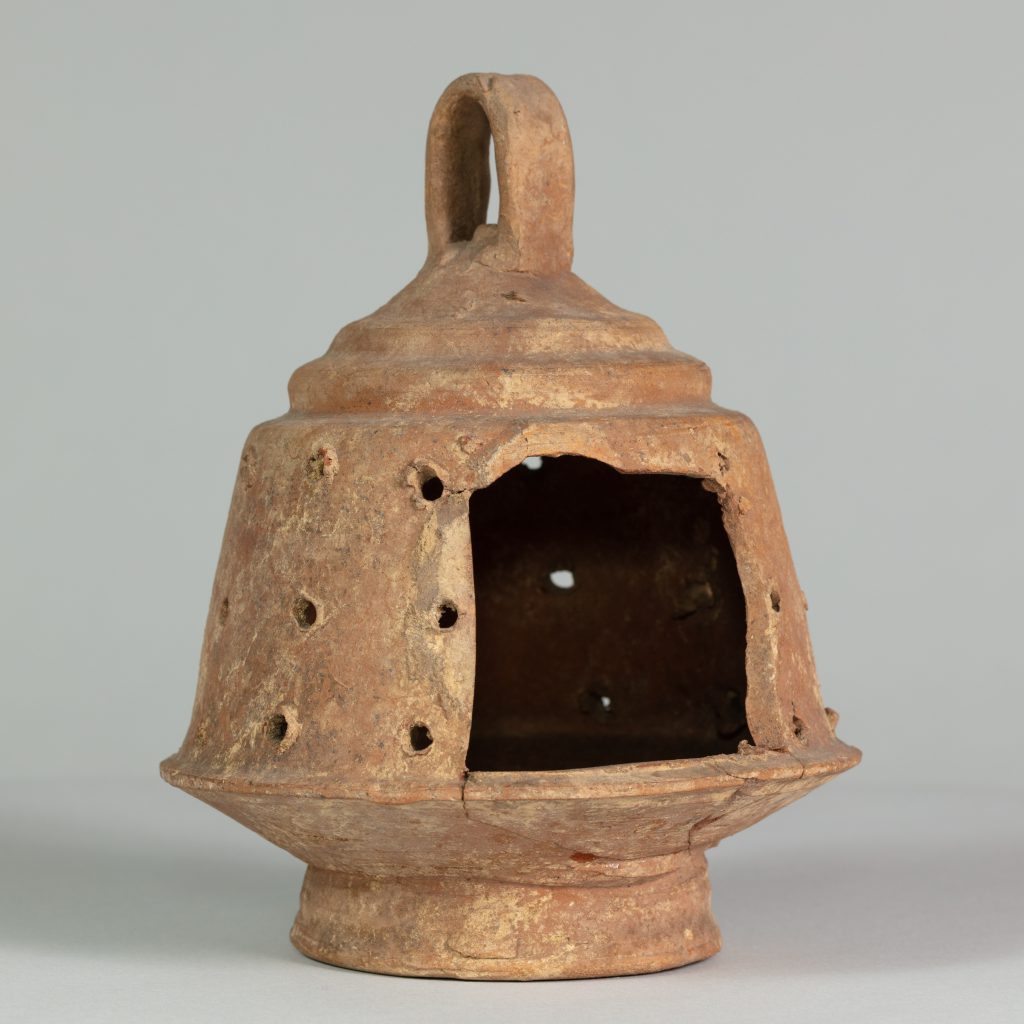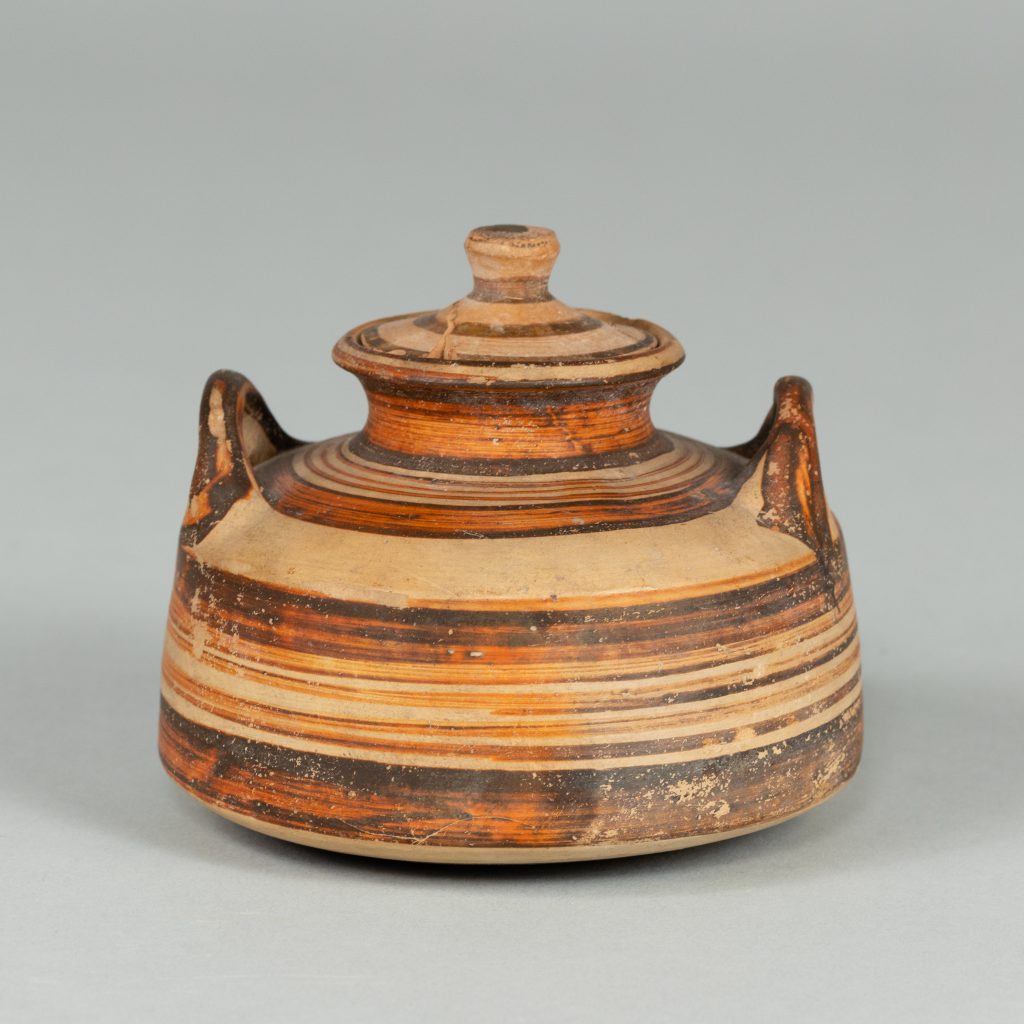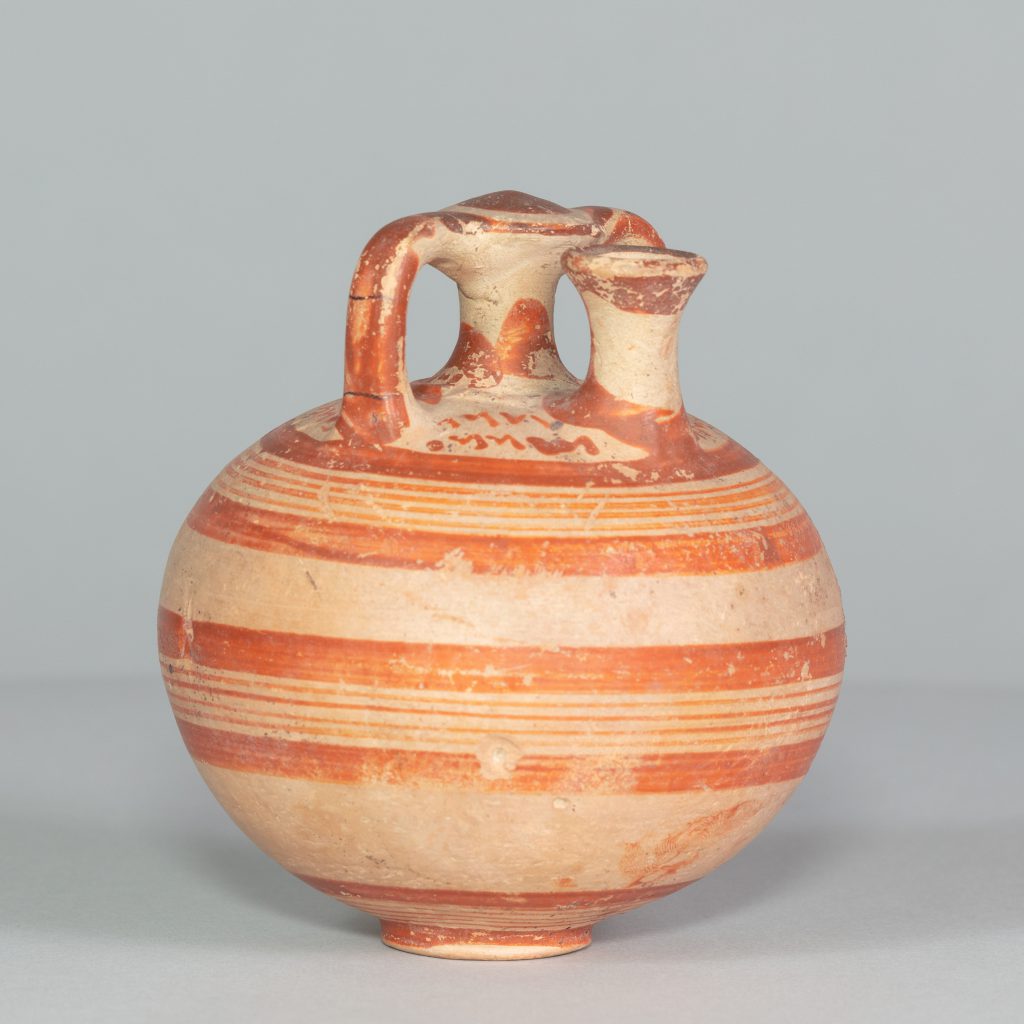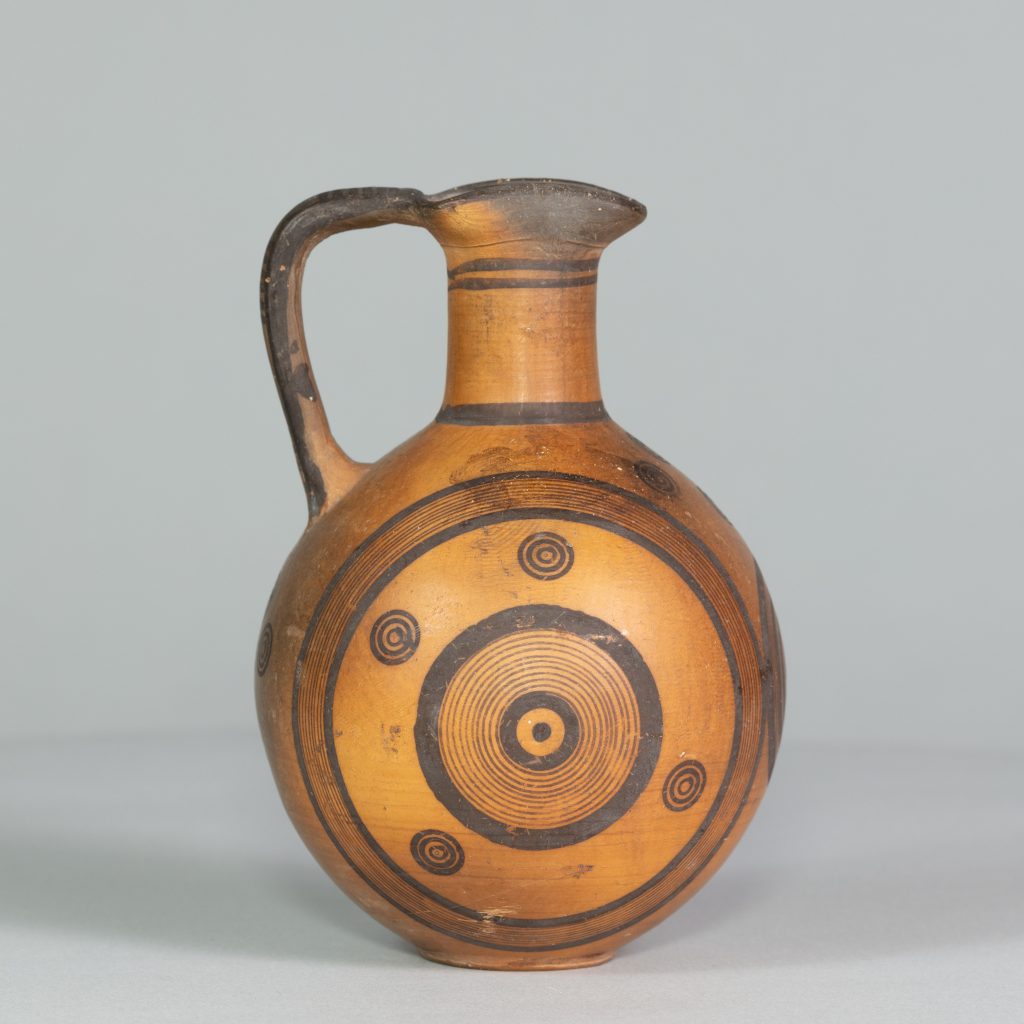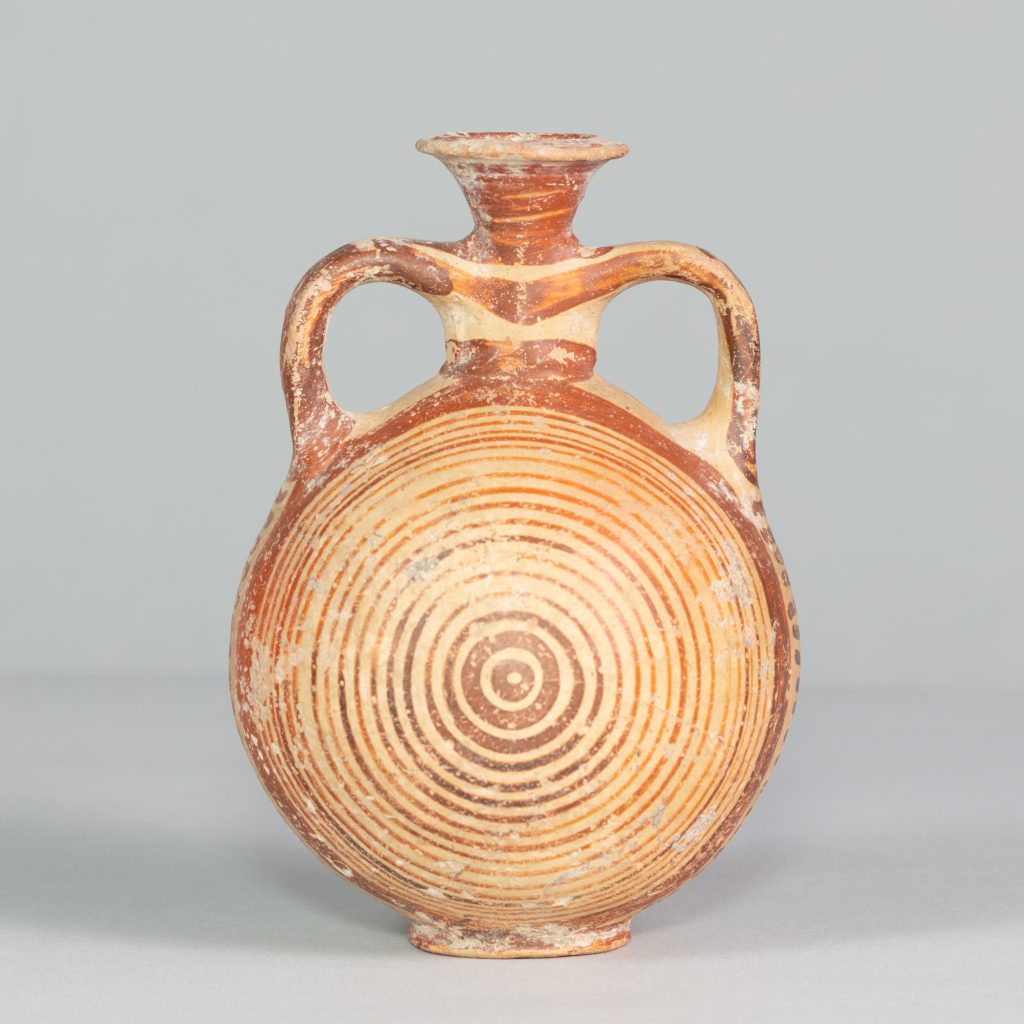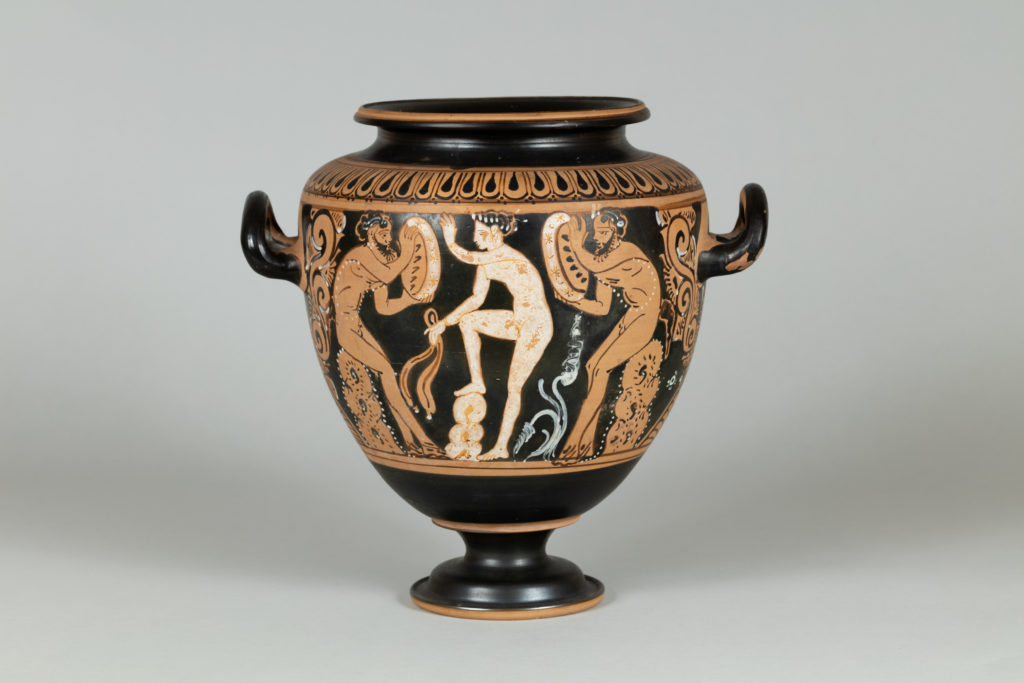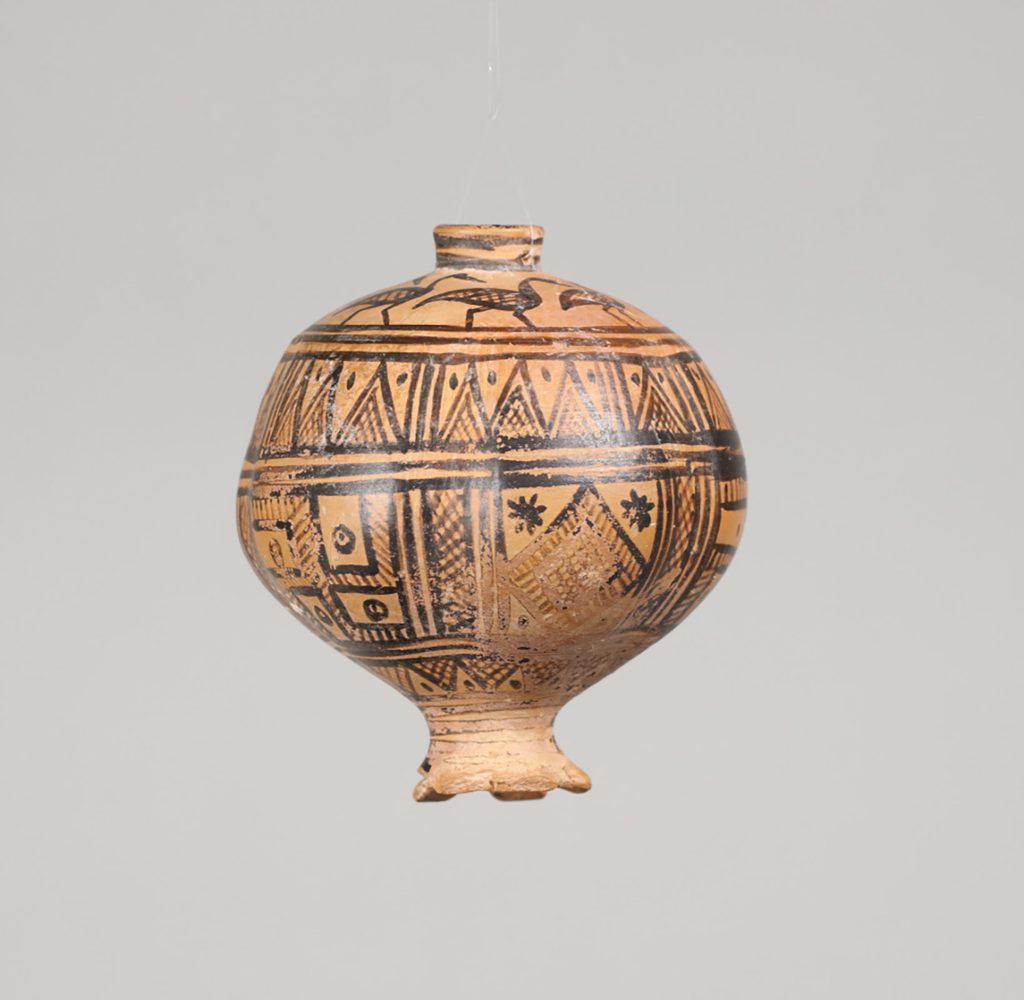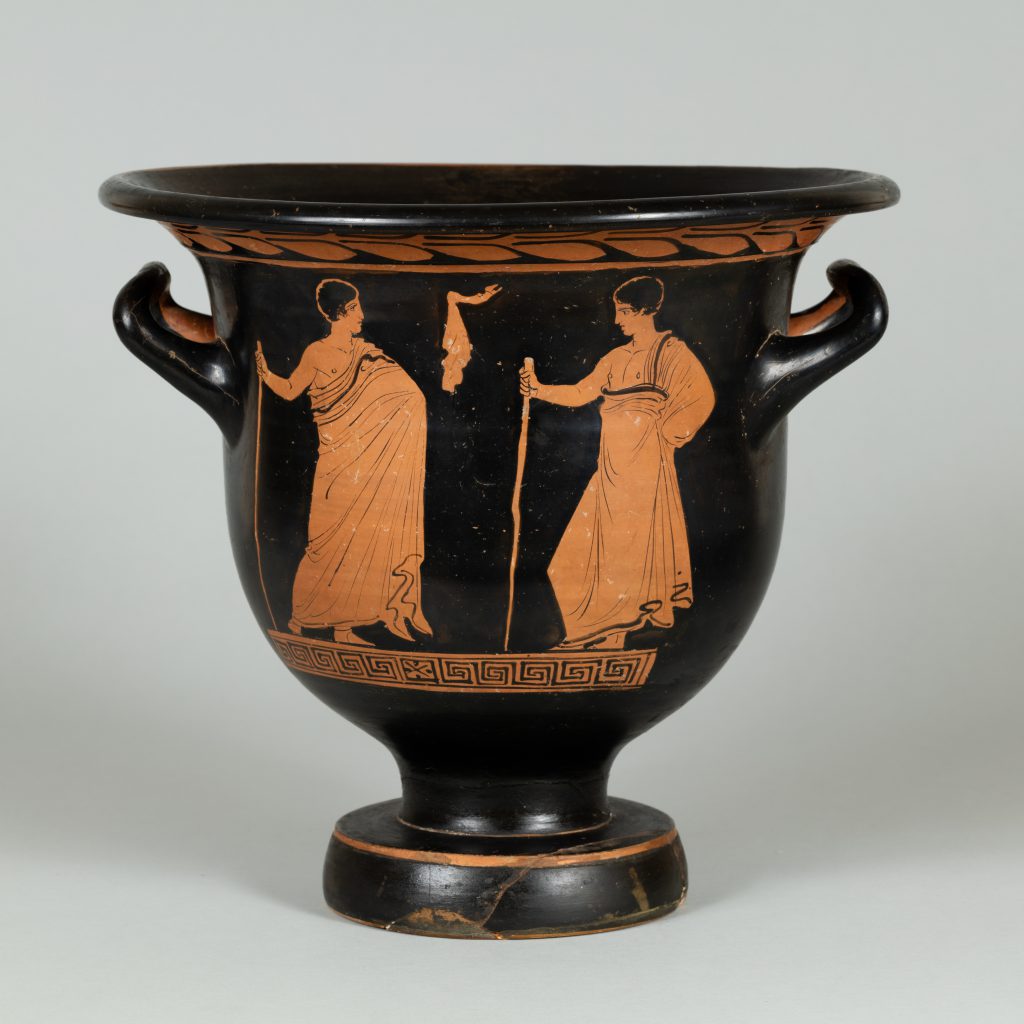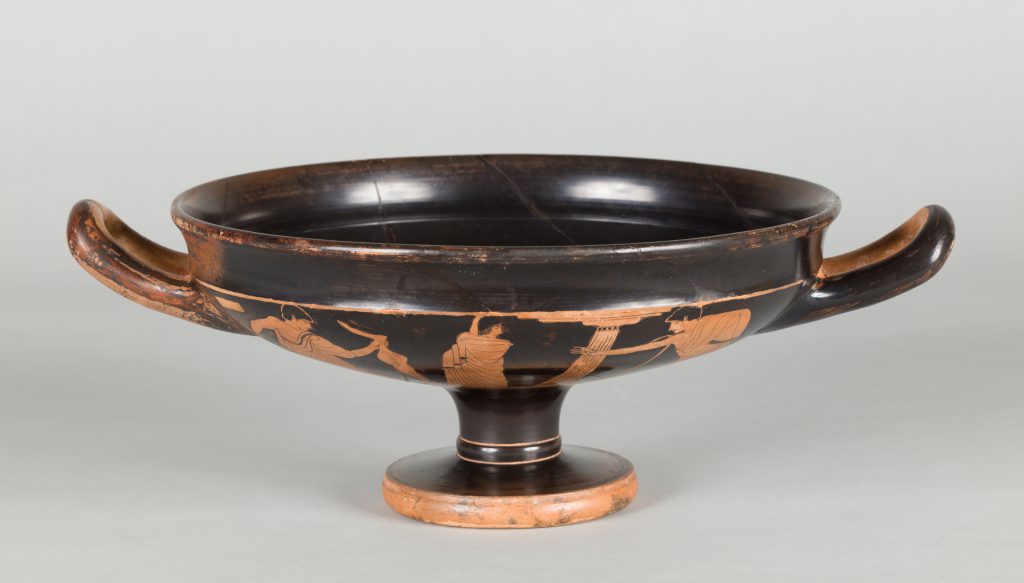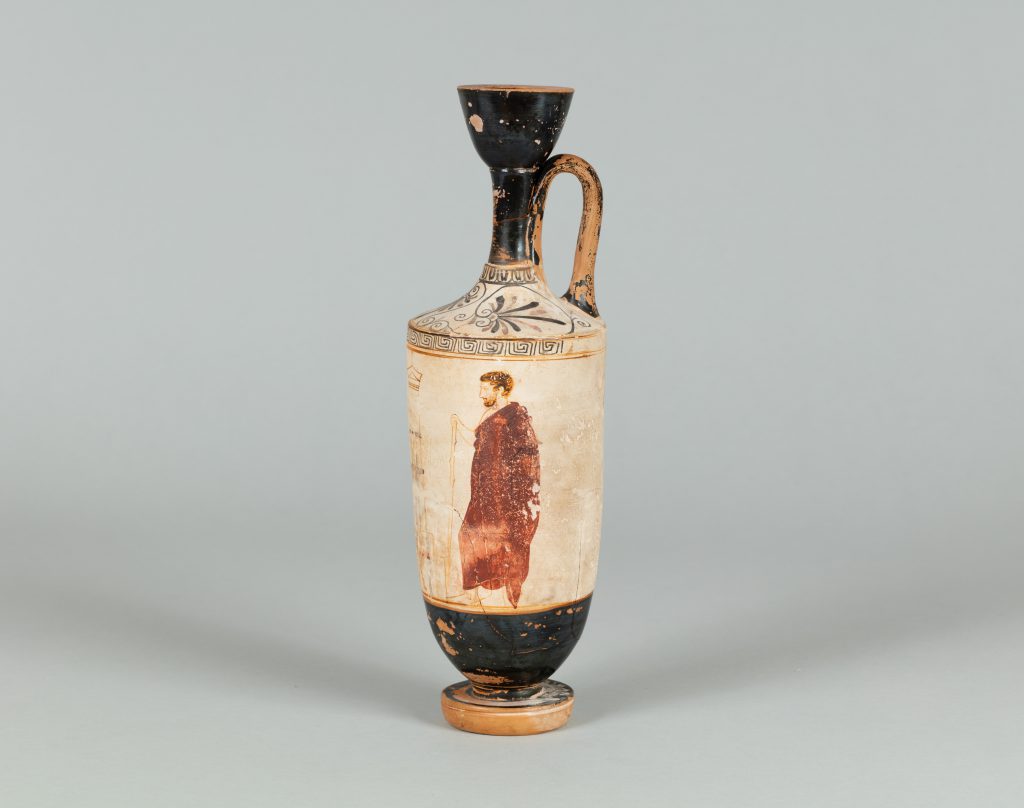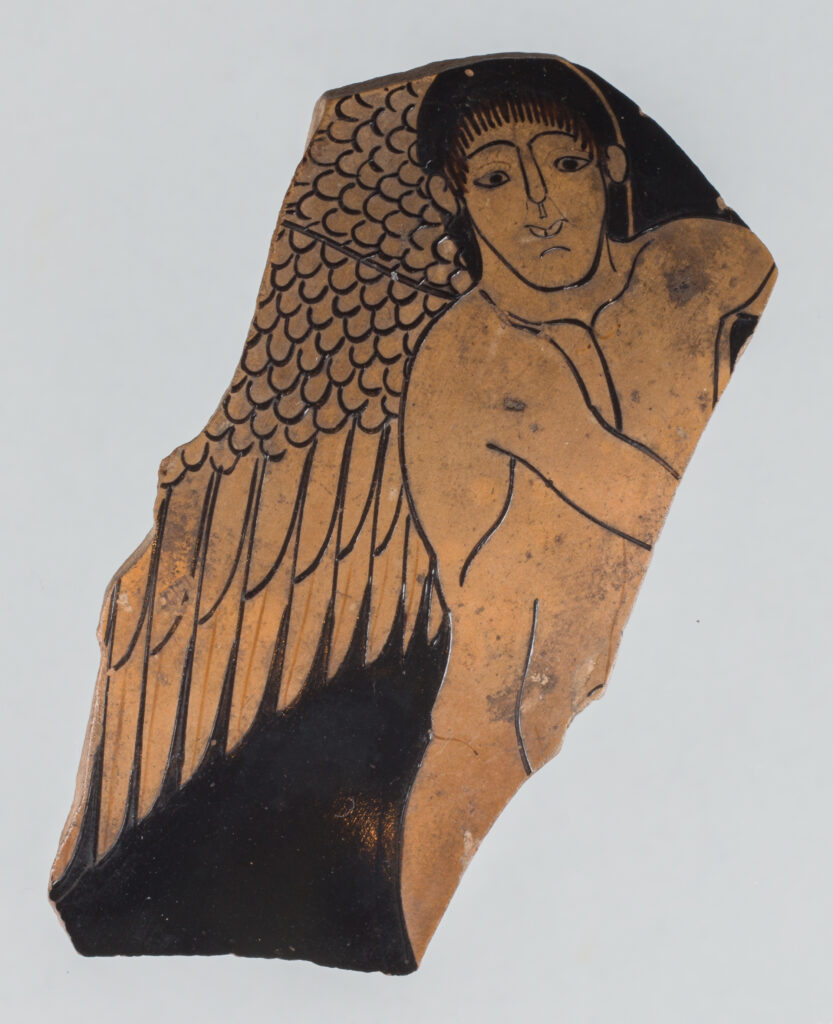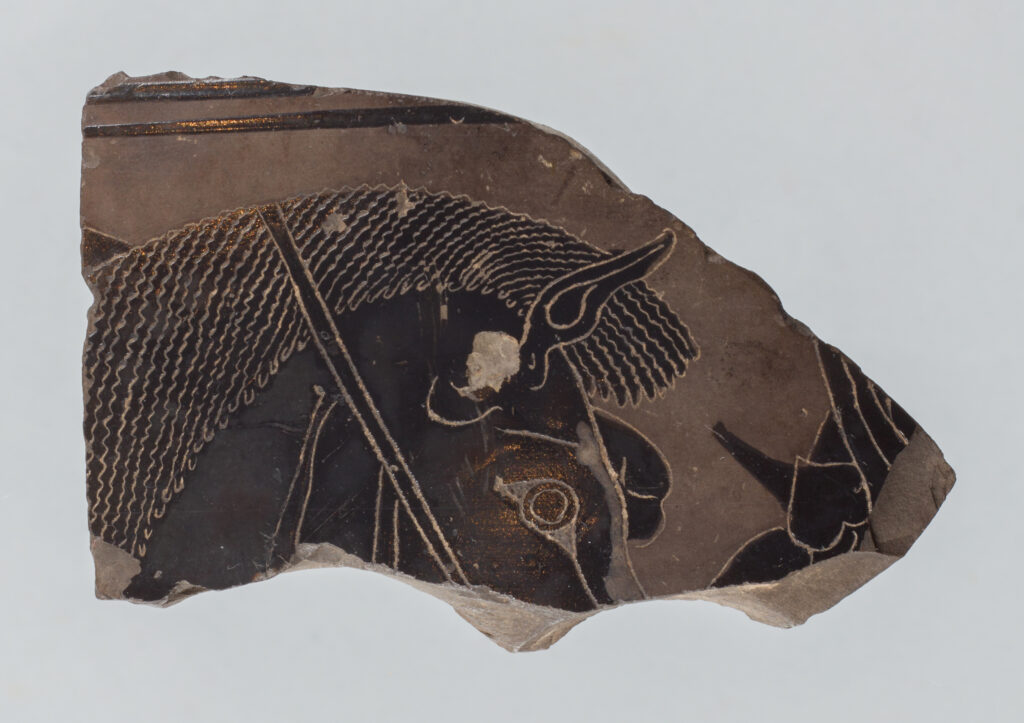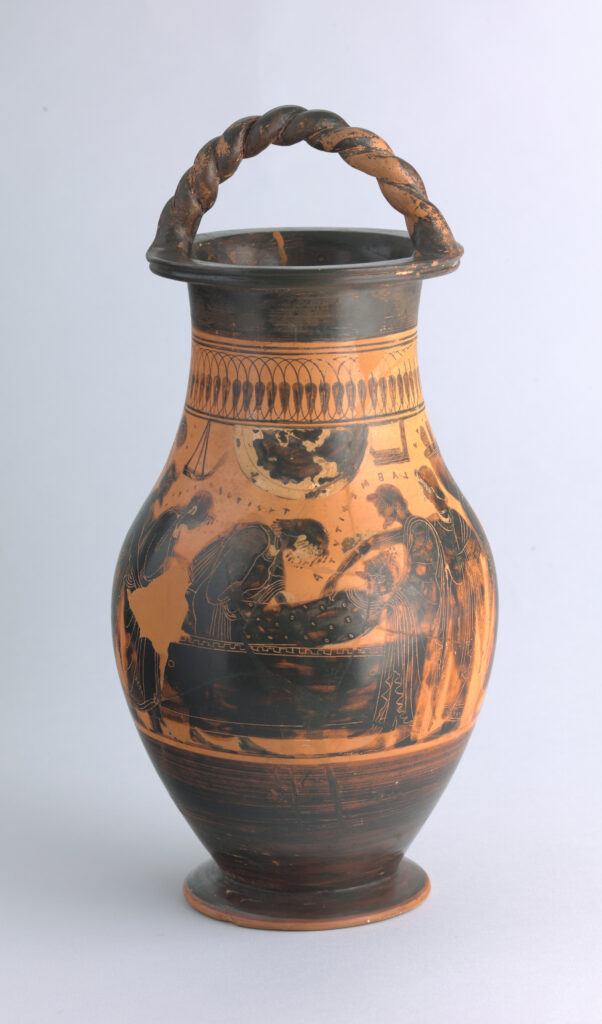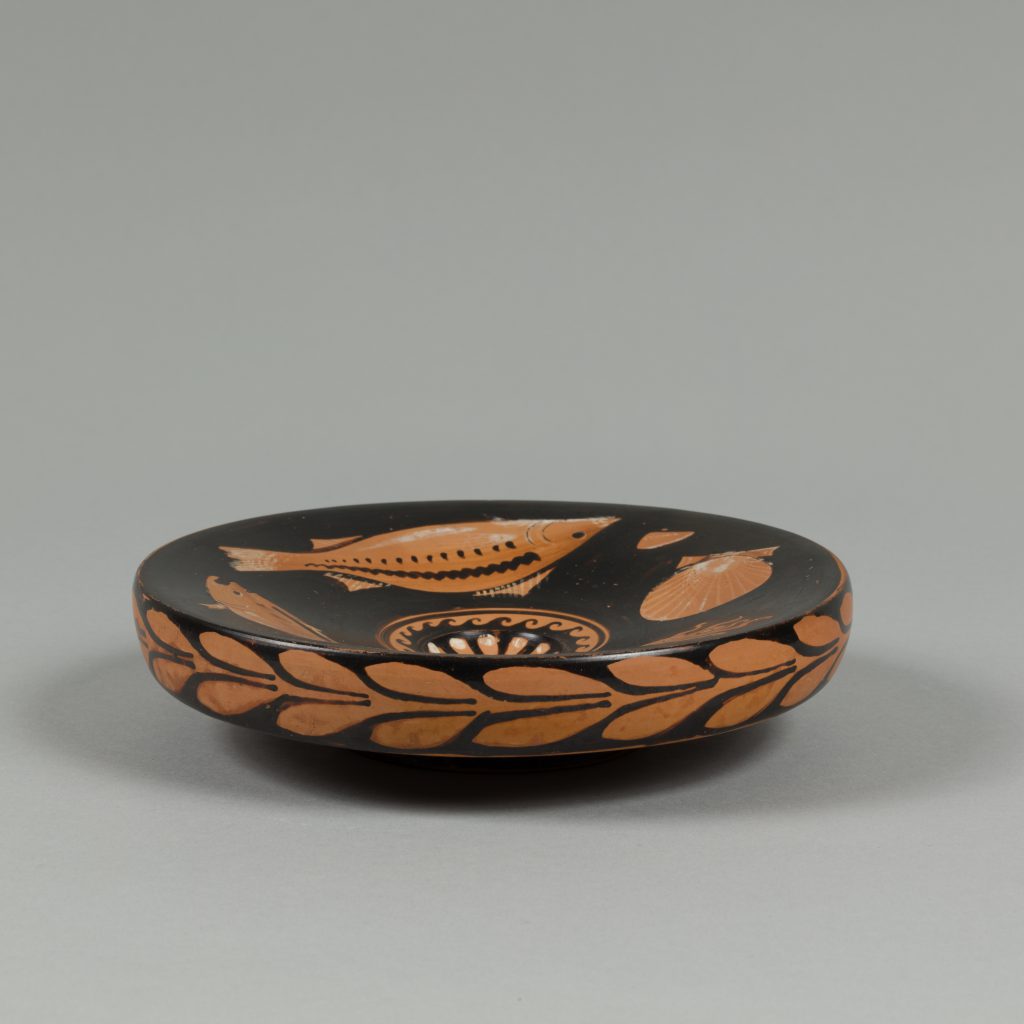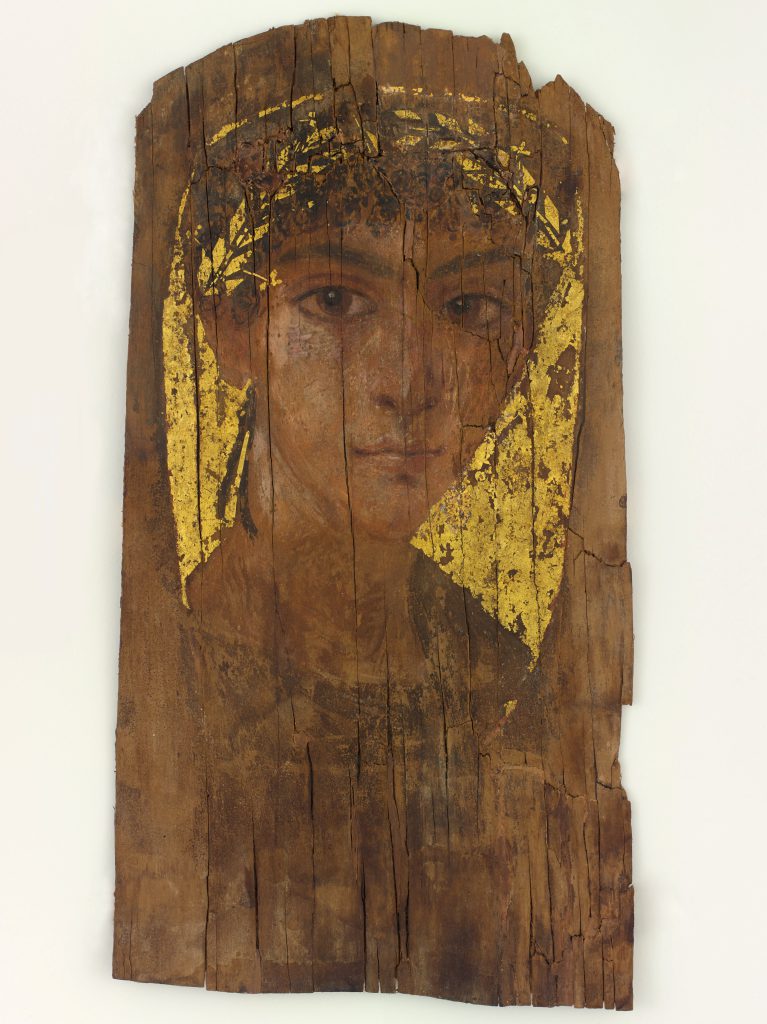
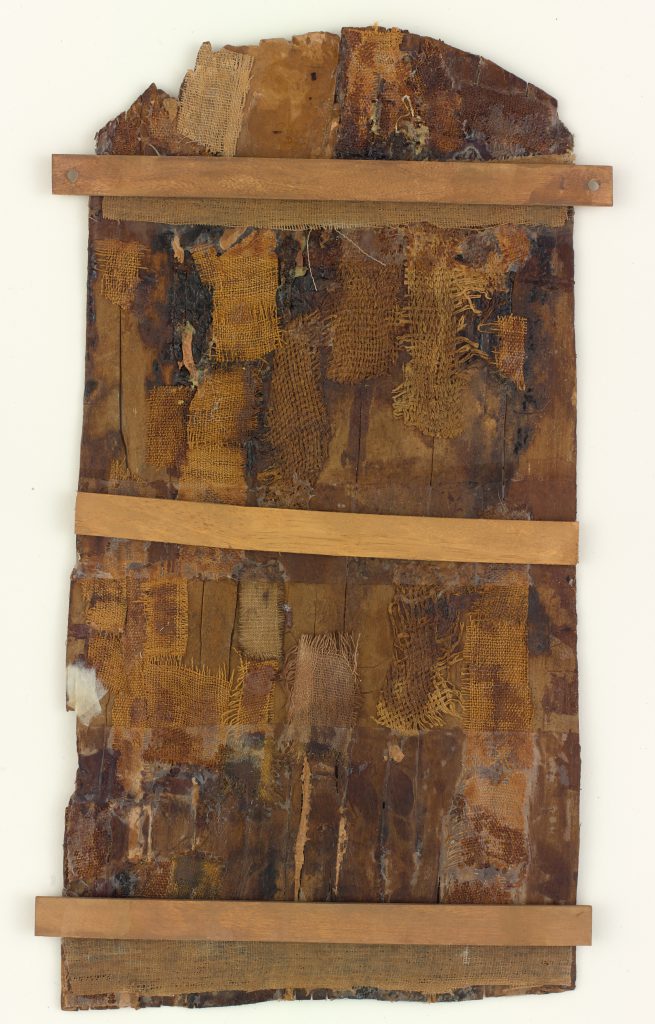
Museum purchase, Adela Wood Smith Trust
2015.38This youth’s portrait was painted on a thin panel of wood with an encaustic technique using pigments blended in hot wax. After a base coat of whitewash (distemper or white lead), the waxed-based colors, either molten, or emulsified with egg or oil, were applied with a brush while cooling wax could be shaped with a harder tool in a painstaking process highly prized in the Greco-Roman world. The Bowdoin portrait depicts the head and upper torso of a young male, perhaps only fifteen or sixteen years old. He wears a dark red tunic with a mantle over one shoulder. The youth is beardless and sports a tuft of hair, or “Horus lock,” tied with ribbons that hang down over his right shoulder.
It is uncertain whether this portrait represents the age when he died or an earlier moment in his life. Current research suggests these portraits may have been painted well before death and were meant for public or domestic display. Upon death, and after the lengthy process of preparing the body for the afterlife, the portrait was trimmed and placed over the head of the mummy. The edges were then carefully secured in the wrapping with strips of linen leaving the face of the portrait exposed. As a final touch, gold leaf was applied to frame the face and to create a wreath of leaves and flowers around the head. The gold preserves the line where the linen wrappings stopped.
Before 1970, collection of Heinz Herzer, Munich; 1970, acquired by Herr Gunther Schmidt from Herzer; after 1970, inherited by Dieter Schmidt; after 1970, private collection, Netherlands; 2015, purchased at auction from Christie’s by the Bowdoin College Museum of Art with funds from the Adela Wood Smith Trust, Brunswick.
